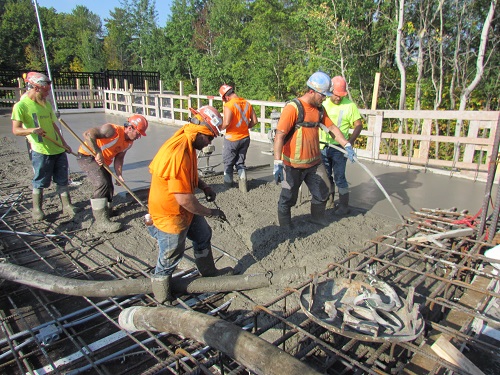 Friday, September 27, 2024
Friday, September 27, 2024  Friday, September 27, 2024
Friday, September 27, 2024 
When choosing a method for monitoring the compressive strength of concrete, it’s important for project managers to consider the impact each technique will have on their schedule. While some testing processes can be done directly onsite, others require extra time for third-party facilities to deliver strength data. Time is not the only factor that contributes to project managers’ decisions. The accuracy of the testing process is just as important as it directly effects the quality of the concrete structure.
The most common method for monitoring the strength of in-situ concrete is the use of field-cured cylinders. This practice has remained generally unchanged since the early 19th century. These samples are casted and cured according to ASTM C31 and tested for compressive strength by a third-party lab at various stages. Usually, if the slab has reached 75% of its designed strength, engineers will give the go ahead to their team to move on to the next steps in the construction process.
There have been many developments to speed up the curing process since this testing method was first introduced. This includes the use of heating blankets, additives, and vapor retarders, etc. However, contractors still wait three days after their pour before testing for strength, even though their targets are often reached much earlier than that.
Despite knowing that, many project managers prefer to stick to this testing practice because it’s “the way its always been done.” However, that doesn’t mean this technique is the fastest and most accurate method for testing the strength of all their pours. In fact, there are many different practices, aside from cylinder break tests, that can be used. Here are seven different approaches to consider when choosing a method of strength testing:
Keep reading this blog on Giatec.ca
The next publication deadline is Friday at noon
Join Construction Links Network